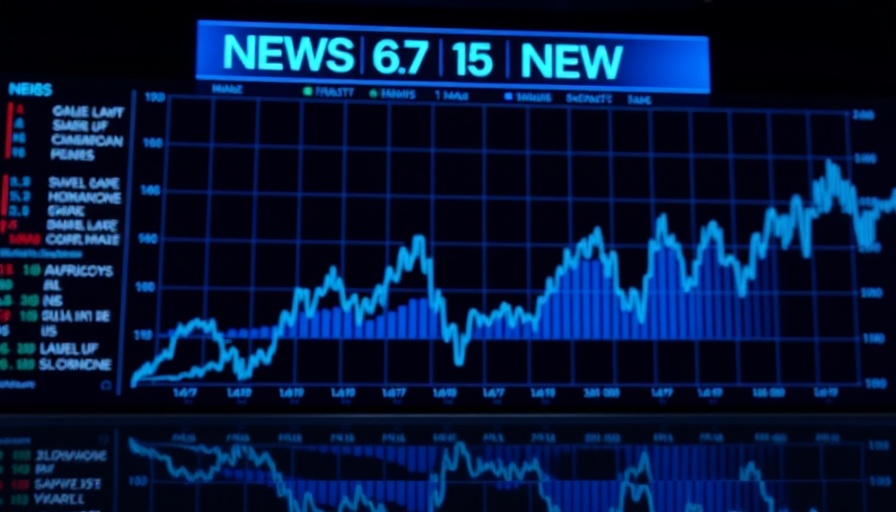
Unraveling the Recent Trends in U.S. Equities
The recent fluctuations in the U.S. stock market have posed a puzzle for many investors, particularly given the volatility surrounding major tech stocks like Nvidia. The day saw the S&P 500 dipping by 0.3% and the Nasdaq 100 facing a sharper decline of 1.6%. Analysts cite concerns over Nvidia’s disappointing earnings report as a key factor spurring this downturn, with Nvidia shares falling 6.1% despite surpassing Wall Street expectations. This highlights the challenge of high investor expectations in the tech sector, where even positive earnings can lead to negative stock prices if they fail to impress.
The Economic Landscape: A Dual Impact
Additionally, growing trade policy uncertainty looms over the markets, with President Trump confirming new tariffs on European automobiles and taxes on Mexico and Canada to take effect soon. This move raises fears of a renewed trade conflict, further fueling market volatility. Investors are keenly aware that tariffs can disrupt supply chains and increase costs for companies, igniting concerns about inflation as well.
Nvidia in the Spotlight: Market Expectations and Reactions
The aftermath of Nvidia's earnings has sent ripples through the technology sector, where stocks are highly interlinked. Following expectations of blockbuster performance, the 3.5% drop in Nvidia shares post-earnings could inspire caution among other tech stocks, leading to a broader market pullback. As noted by analysts, Nvidia’s unprecedented growth in the AI market has made it a significant influencer of market performance. With options traders bracing for a 7.7% move in stock prices post-earnings, the actual fluctuations of 6.1% can be seen as illustrative of the market's heightened sensitivity.
Impact of Macro Economic Data on the Market
Adding to the caution is the unexpected rise in jobless claims to 242,000, a sign that the labor market may be softening. Such indicators can influence not only consumer behaviors but also investor decisions across sectors. Economic data such as GDP growth at an annualized 2.3% in the fourth quarter also plays a role in shaping the outlook for equity markets. A thriving economy typically leads to improved performance for stocks; however, the current volatility has created a discordant atmosphere, making predictions complex.
Insights and Predictions: What's Next for AI and Tech Stocks?
Looking ahead, the focus will likely shift towards upcoming economic indicators such as the Core Personal Consumption Expenditures (PCE) index, which the Federal Reserve considers a benchmark for inflation. This will be keenly observed as inflationary pressures often shape monetary policy. Should the Core PCE data exceed the anticipated 2.6%, it could further contribute to market unease and volatility. Conversely, if conditions stabilize, there might be a slight resurgence in investor confidence.
Understanding the Broader Implications of Tariff Policies
The impending implementation of tariffs affects not just the auto industry but also weighs heavily on investor sentiment. With trade negotiations clouded in ambiguity, the outlook for stock performance hinges significantly on political developments. Tariffs can pivot market sentiment from caution to risk-off, impacting decisions across various sectors, particularly technology, where supply chains are heavily globalized.
Concluding Thoughts: Navigating the Volatile Landscape
In conclusion, the current market sentiment serves as a reminder of the delicate balance between high-tech optimism and geopolitical uncertainty. As technology stocks remain at the forefront of investment narratives, the implications of Nvidia’s performance, alongside looming tariffs and economic indicators, will continue to dictate market trajectories. For AI enthusiasts and investors alike, staying abreast of these trends is essential for informed decision-making.
 Add Row
Add Row  Add
Add 


 Add Row
Add Row  Add
Add 

Write A Comment